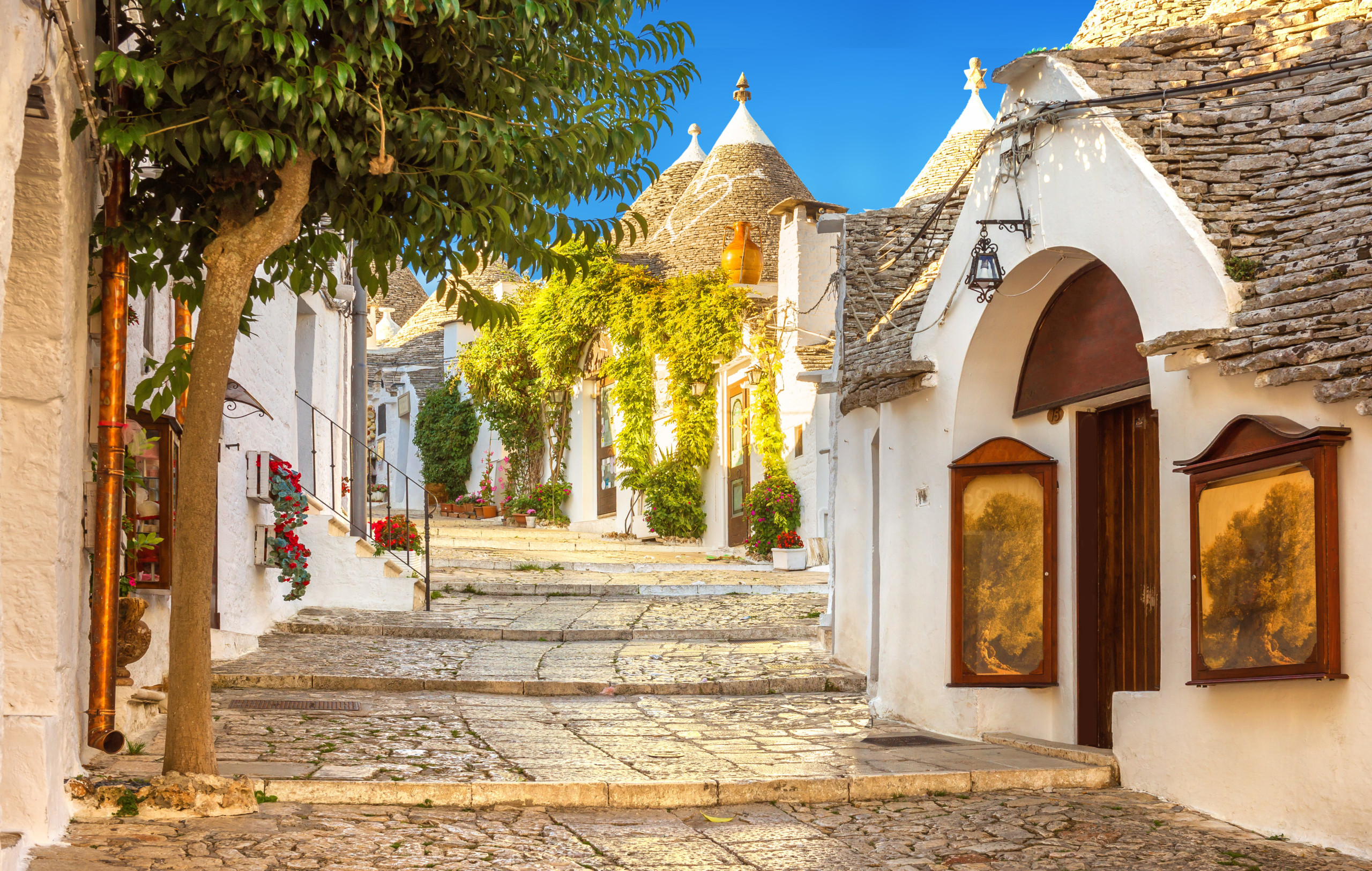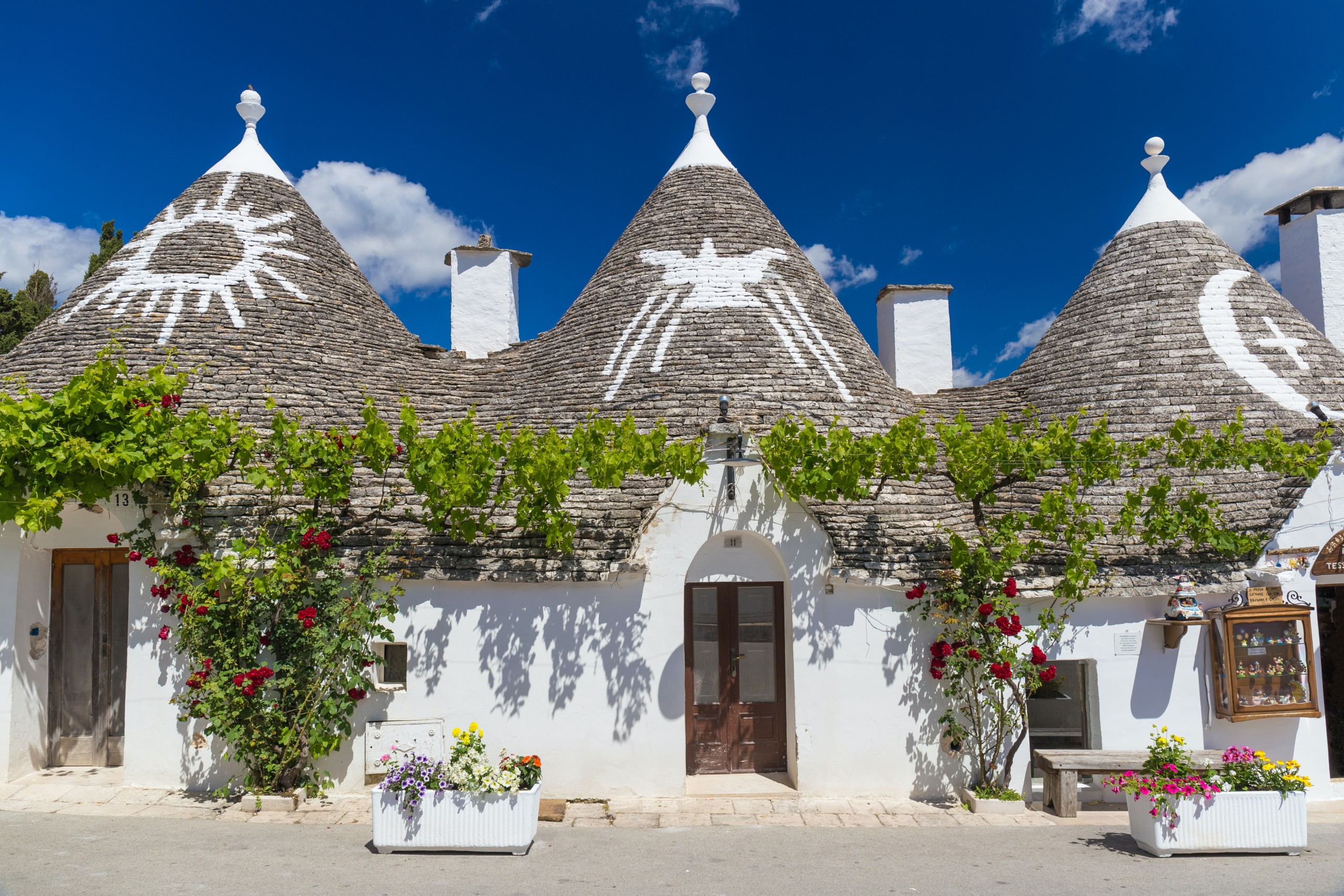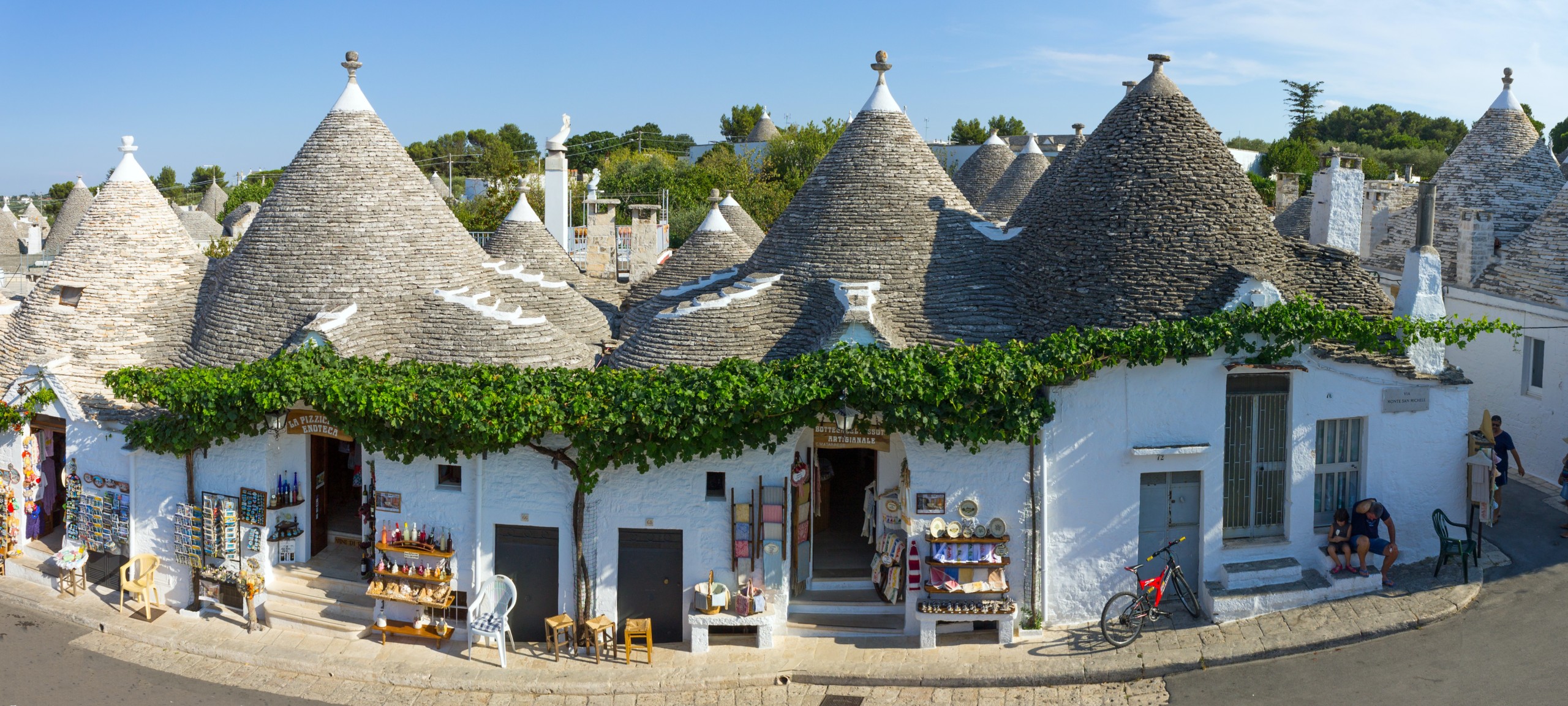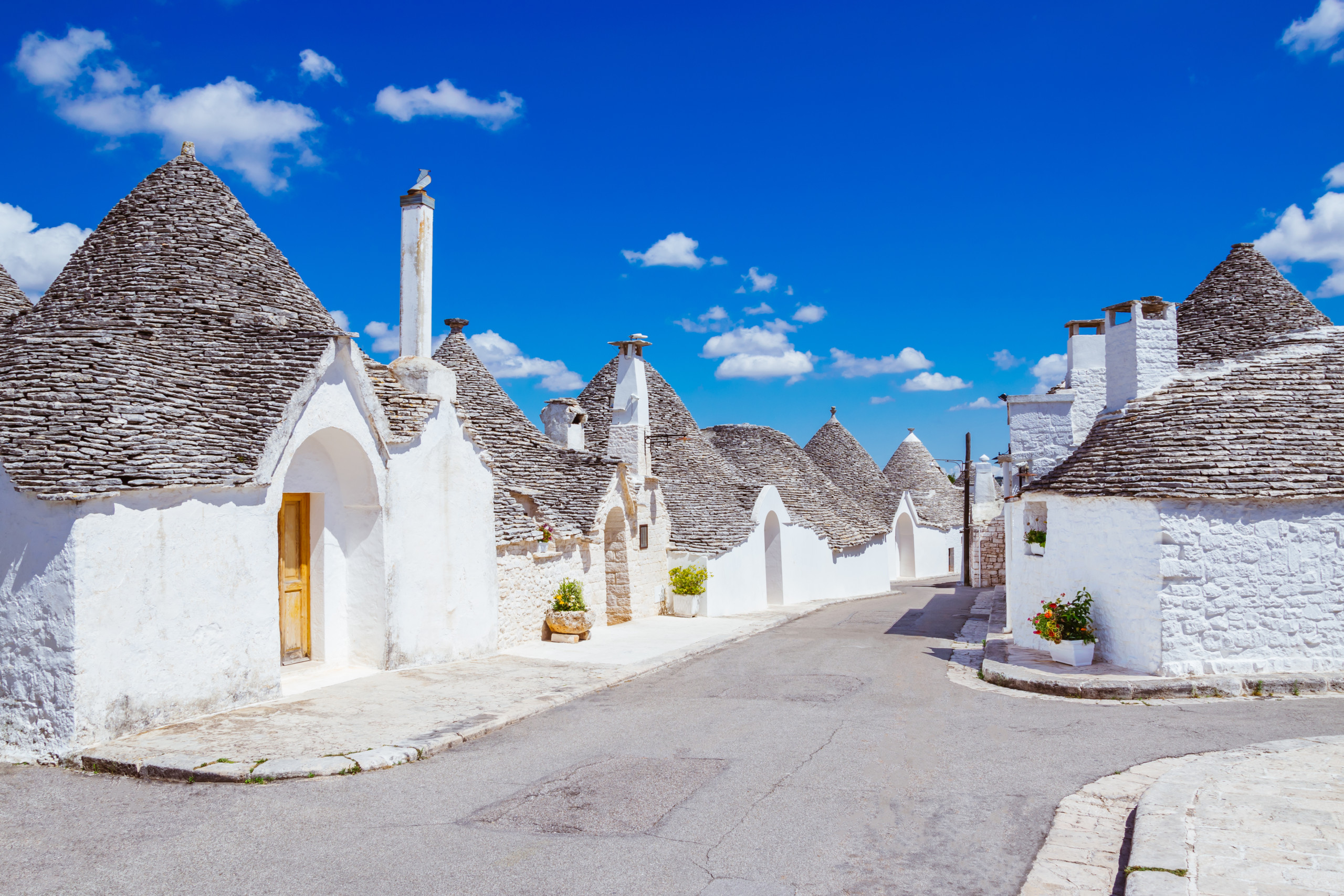As I prepared for my first visit to Puglia’s village of Alberobello, I learned two very distinct stories associated with the creation of the legendary round structures called trulli. These lovely and unique, conically-topped structures form the heart of this very popular tourist site.
Trulli and Taxes
 The first story concerns the shepherds who once tended their herds on the hills of this area. As shepherds tended their sheep millennium ago, they received occasional word of Roman tax collectors. Cleverly, the locals designed the trulli as temporary shelters, by intent and design. They constructed these circular shelters out of local flat limestone and other local rock. They created self-supporting roofs of local slate. In order to support each layer of slate, they made the final form conical, not flat. When the time came to move the herd of sheep, locals could deconstruct these structures, moved to a new location, and rebuild. Hardly the ancient form of “RV,” but certainly a mobile form of protection.
The first story concerns the shepherds who once tended their herds on the hills of this area. As shepherds tended their sheep millennium ago, they received occasional word of Roman tax collectors. Cleverly, the locals designed the trulli as temporary shelters, by intent and design. They constructed these circular shelters out of local flat limestone and other local rock. They created self-supporting roofs of local slate. In order to support each layer of slate, they made the final form conical, not flat. When the time came to move the herd of sheep, locals could deconstruct these structures, moved to a new location, and rebuild. Hardly the ancient form of “RV,” but certainly a mobile form of protection.
Before the Roman tax collectors came calling, residents took down these structures, their stone materials strewn wherever the owners could toss them. The tax collector arrived, but the inhabitants would explain they had no shelter, were at the mercy of the elements, and hence owned no taxes.
…and More Taxes
The second story, almost as engaging, suggests that during the 17th Century a certain Count Giangirolamo II was appointed provincial head of Puglia. He owed fealty to the Spanish Viceroy of the Kingdom of Naples whose laws required the payment of taxes to the Kingdom. The count wished to avoid levying taxes on the populous for building ‘permanent structures’ in the region. Construction of the trulli came about because of the presence of various stones — limestone in particular — that made building without mortar easier. The laws in effect at the time stated structures built without mortar were not considered permanent buildings, hence the inhabitants owed no taxes.
Alberobello’s Trulli Symbols
Many interesting symbols have been whitewashed on the conical roofs of trulli. Some attribute these symbols to witchcraft, or a means of finding protection from the malocchio, the evil eye. Others suggest they offer a means of benediction from God upon a home. Regardless, they provide an interesting for conjecture on the part of visitors.
Alberobello’s Trulli Today
No matter which story about the trulli you accept, these lovely small buildings have left a picturesque legacy on Alberobello. Today you will find the town filled with these unique round structures. The trulli include residences, B&B’s, hotels, stores, and souvenir shops. The village covers a hilltop in northeastern Puglia, and its charming streets and architecture entice large numbers of tourists to visit.
During my first visit in October, I visited the Belvedere Santa Lucia as a first stop. From this lovely terrace, the view reaches across the heart of the village. It provides a visual reference to streets, directions of travel, and places to visit. The Parrocchia Sant’Antonio di Padova, what I call the “Duomo” of Alberobello, offers a cooling retreat while studying the beautiful interior. I explored the many shops along all of the lanes of the village that offer everything from hand-loomed wool wraps to liquor to books.
My stay at the Trulli Albergo Diffuso offered wonderful hospitality and enriched my understanding of the generous Pugliese. This lovely complex of trulli offers comfortable and private rooms in the heart of the village. The perfect location rests just across the lane from the Belvedere, and you can reach many restaurants, trattorias, and cafes within an easy walk. It takes about ten minutes to walk from the parking garage to the property. Keep in mind the village covers a hill with some steep streets that become slick in wet weather.
When You Visit
It is difficult to imagine visiting Puglia without a visit to Alberobello. Be prepared to navigate around the many visitors who fill the lanes of the village, especially during the months of May through September, but during the off-season of October to April, you may find the lanes nearly empty.



